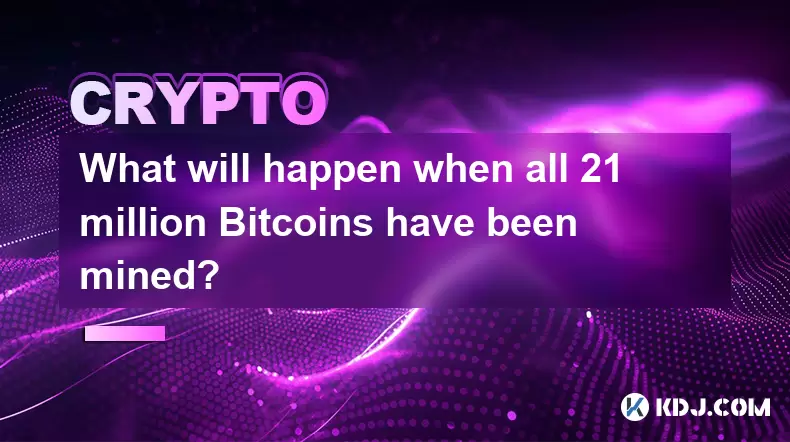-
 Bitcoin
Bitcoin $113900
0.81% -
 Ethereum
Ethereum $3472
0.21% -
 XRP
XRP $2.898
1.45% -
 Tether USDt
Tether USDt $0.0000
0.04% -
 BNB
BNB $748.0
0.32% -
 Solana
Solana $162.1
0.13% -
 USDC
USDC $0.9999
0.02% -
 TRON
TRON $0.3256
0.52% -
 Dogecoin
Dogecoin $0.1989
1.70% -
 Cardano
Cardano $0.7255
3.59% -
 Hyperliquid
Hyperliquid $38.00
1.15% -
 Stellar
Stellar $0.4002
7.96% -
 Sui
Sui $3.422
1.21% -
 Chainlink
Chainlink $16.22
2.48% -
 Bitcoin Cash
Bitcoin Cash $540.4
1.98% -
 Hedera
Hedera $0.2466
6.42% -
 Ethena USDe
Ethena USDe $1.001
0.03% -
 Avalanche
Avalanche $21.39
0.66% -
 Toncoin
Toncoin $3.621
1.12% -
 Litecoin
Litecoin $109.5
0.60% -
 UNUS SED LEO
UNUS SED LEO $8.953
-0.07% -
 Shiba Inu
Shiba Inu $0.00001221
2.27% -
 Polkadot
Polkadot $3.589
2.06% -
 Uniswap
Uniswap $9.124
2.03% -
 Monero
Monero $294.4
0.24% -
 Dai
Dai $1.000
0.02% -
 Bitget Token
Bitget Token $4.322
0.76% -
 Pepe
Pepe $0.00001046
2.30% -
 Cronos
Cronos $0.1327
3.25% -
 Aave
Aave $257.5
1.79%
Why are there so many different cryptocurrencies, and what makes Bitcoin unique?
Thousands of cryptocurrencies exist due to blockchain’s open, decentralized nature, enabling innovation in speed, privacy, and utility beyond Bitcoin’s original design.
Aug 03, 2025 at 08:36 pm

Understanding the Proliferation of Cryptocurrencies
The existence of thousands of different cryptocurrencies stems from the open and decentralized nature of blockchain technology. Once Bitcoin introduced the concept of a peer-to-peer digital currency, developers worldwide began experimenting with the underlying technology to address various limitations or create new use cases. Each new cryptocurrency, or altcoin, often emerges with a specific goal—such as faster transaction speeds, enhanced privacy, smart contract functionality, or solutions for decentralized finance (DeFi). The barrier to entry for creating a new token is relatively low, especially with platforms like Ethereum enabling the creation of ERC-20 tokens through simple smart contracts. This ease of development has led to an explosion in the number of digital assets available in the market.
Technological Diversification and Innovation
Different cryptocurrencies serve different purposes, which explains their wide variety. For instance, Litecoin was designed to offer faster block generation times than Bitcoin. Monero focuses on transactional privacy using ring signatures and stealth addresses. Chainlink provides decentralized oracle services that connect smart contracts with real-world data. Meanwhile, Uniswap tokens (UNI) govern a decentralized exchange protocol. Each project targets a niche within the broader financial or technological ecosystem. This diversification allows blockchain technology to extend beyond simple currency use into areas like supply chain tracking, identity verification, and automated financial instruments. The modular nature of blockchain encourages developers to fork existing codebases and tweak parameters such as block time, consensus mechanism, or supply cap, further increasing variety.
Consensus Mechanisms and Network Design
One key factor contributing to the diversity of cryptocurrencies is the variation in consensus mechanisms. Bitcoin uses Proof of Work (PoW), where miners solve complex cryptographic puzzles to validate transactions and secure the network. Other cryptocurrencies have adopted Proof of Stake (PoS), where validators are chosen based on the number of coins they hold and are willing to "stake" as collateral. Examples include Cardano and Solana. Some projects use Delegated Proof of Stake (DPoS), while others experiment with Proof of History (PoH) or hybrid models. These differing mechanisms affect energy consumption, transaction speed, decentralization, and security. As a result, new cryptocurrencies often emerge to test alternative approaches that aim to solve perceived inefficiencies in earlier systems.
Bitcoin’s Foundational Role and Unique Attributes
Bitcoin remains unique due to its status as the first decentralized cryptocurrency and its unparalleled network effects. It operates on a transparent, immutable ledger secured by a vast global network of miners. The total supply of Bitcoin is capped at 21 million coins, creating a deflationary monetary policy that contrasts with fiat currencies. Its Proof of Work consensus model, while energy-intensive, has proven resilient against attacks over more than a decade. No other cryptocurrency has matched Bitcoin’s level of decentralization, hash rate security, or global recognition. It is often referred to as digital gold because of its store-of-value characteristics. The Bitcoin blockchain is intentionally simple—its scripting language is limited to prevent complexity that could introduce vulnerabilities, making it highly secure for its primary purpose: transferring value.
Decentralized Governance and Community Influence
The development and evolution of cryptocurrencies are often guided by their communities rather than centralized authorities. Bitcoin’s protocol changes require broad consensus among miners, developers, and node operators, making upgrades slow but highly scrutinized. In contrast, some newer cryptocurrencies implement on-chain governance, where token holders vote directly on protocol changes—examples include Tezos and Dash. This divergence in governance models contributes to the variety of projects, as different communities prioritize different values such as speed, inclusivity, or stability. The lack of a central decision-making body in most blockchain projects fosters innovation but also leads to forks and splinter projects. For example, Bitcoin Cash emerged from a disagreement over block size limits, illustrating how philosophical differences can spawn new cryptocurrencies.
Utility Tokens vs. Currency-Focused Cryptocurrencies
Many newer cryptocurrencies are not designed to be currencies but rather utility tokens that grant access to a service or platform. For example, Filecoin enables decentralized data storage, and users pay in FIL tokens to store files. The Sandbox (SAND) is used within a virtual world platform for purchasing digital assets. These tokens are fundamentally different from Bitcoin, which is primarily used as a medium of exchange or store of value. The rise of initial coin offerings (ICOs) and decentralized applications (dApps) has driven demand for such utility tokens, further expanding the cryptocurrency landscape. This functional differentiation explains why so many digital assets coexist—they serve distinct roles within the blockchain ecosystem rather than competing directly with Bitcoin.
Frequently Asked Questions
Can any cryptocurrency replace Bitcoin?
While other cryptocurrencies may surpass Bitcoin in transaction speed or functionality, none have replicated its level of decentralization, security, and brand recognition. Bitcoin’s first-mover advantage, combined with its fixed supply and widespread adoption, makes it extremely difficult to displace as the leading digital asset. Attempts to create "Bitcoin killers" have not achieved the same level of network trust or mining security.
Why do some cryptocurrencies have no value?
A cryptocurrency gains value through utility, scarcity, and demand. Many tokens are created without a clear use case, suffer from poor adoption, or are abandoned by their development teams. Tokens that fail to solve a real problem or lack a functioning network often see their value drop to near zero. Market sentiment and speculative trading also play significant roles in short-term valuation.
How can I verify the legitimacy of a new cryptocurrency?
Check if the project has a transparent whitepaper, active development on platforms like GitHub, and a reputable team. Look for audits of the smart contracts by third-party firms. Avoid tokens with anonymous teams, unrealistic promises, or pressure to invest quickly. Legitimate projects typically have community forums, social media presence, and clear roadmaps.
Is Bitcoin’s technology outdated compared to newer blockchains?
Bitcoin’s technology prioritizes security and stability over advanced features. While it lacks smart contract capabilities like Ethereum, this simplicity reduces attack surfaces and enhances reliability. Upgrades like SegWit and the Lightning Network have improved scalability without compromising core principles. Its longevity demonstrates that technological "newness" does not always equate to superiority in the context of monetary trust.
Disclaimer:info@kdj.com
The information provided is not trading advice. kdj.com does not assume any responsibility for any investments made based on the information provided in this article. Cryptocurrencies are highly volatile and it is highly recommended that you invest with caution after thorough research!
If you believe that the content used on this website infringes your copyright, please contact us immediately (info@kdj.com) and we will delete it promptly.
- Navigating the Meme Coin Mania: Cold Wallets, SHIB, and DOGE in 2025
- 2025-08-03 22:30:16
- Bitcoin's Price Fall and Scrutiny: What's a New Yorker to Think?
- 2025-08-03 22:30:16
- Shiba Inu's Resistance and Recovery Push: What's Next for SHIB?
- 2025-08-03 22:50:16
- Bitcoin, Hashcash, and Crypto Innovation: A Look at the Foundation and Future
- 2025-08-03 23:12:53
- Meme Coin Mania: Bonk, Pudgy Penguins, and the Quest for the Next Crypto Sensation
- 2025-08-03 22:50:16
- Binance Coin's Bull Run: Chain Upgrades, Token Burns, and the Road to $1000
- 2025-08-03 23:15:31
Related knowledge

What is the difference between holding Bitcoin on an exchange versus in a personal wallet?
Aug 02,2025 at 03:15pm
Understanding Custodial vs Non-Custodial ControlWhen holding Bitcoin on an exchange, users are essentially entrusting their assets to a third party. E...

What is a 51% attack, and could it destroy Bitcoin?
Aug 03,2025 at 05:08pm
Understanding the Concept of a 51% AttackA 51% attack refers to a scenario in which a single entity or group gains control of more than half of a bloc...

What are the biggest security risks associated with holding Bitcoin?
Aug 03,2025 at 03:16pm
Exposure to Private Key CompromiseOne of the most critical security risks when holding Bitcoin is the compromise of private keys. These cryptographic ...

Can governments shut down or ban Bitcoin?
Aug 02,2025 at 09:44am
Understanding Bitcoin’s Decentralized StructureBitcoin operates on a decentralized peer-to-peer network, meaning it is not controlled by any single en...

What will happen when all 21 million Bitcoins have been mined?
Aug 03,2025 at 09:50am
Understanding the 21 Million Bitcoin CapThe 21 million Bitcoin cap is a foundational rule embedded in Bitcoin’s source code, designed by Satoshi Nakam...

What are Bitcoin transaction fees, and why do they fluctuate?
Aug 03,2025 at 01:51am
Understanding Bitcoin Transaction FeesBitcoin transaction fees are small amounts of Bitcoin paid by users to miners for processing and confirming tran...

What is the difference between holding Bitcoin on an exchange versus in a personal wallet?
Aug 02,2025 at 03:15pm
Understanding Custodial vs Non-Custodial ControlWhen holding Bitcoin on an exchange, users are essentially entrusting their assets to a third party. E...

What is a 51% attack, and could it destroy Bitcoin?
Aug 03,2025 at 05:08pm
Understanding the Concept of a 51% AttackA 51% attack refers to a scenario in which a single entity or group gains control of more than half of a bloc...

What are the biggest security risks associated with holding Bitcoin?
Aug 03,2025 at 03:16pm
Exposure to Private Key CompromiseOne of the most critical security risks when holding Bitcoin is the compromise of private keys. These cryptographic ...

Can governments shut down or ban Bitcoin?
Aug 02,2025 at 09:44am
Understanding Bitcoin’s Decentralized StructureBitcoin operates on a decentralized peer-to-peer network, meaning it is not controlled by any single en...

What will happen when all 21 million Bitcoins have been mined?
Aug 03,2025 at 09:50am
Understanding the 21 Million Bitcoin CapThe 21 million Bitcoin cap is a foundational rule embedded in Bitcoin’s source code, designed by Satoshi Nakam...

What are Bitcoin transaction fees, and why do they fluctuate?
Aug 03,2025 at 01:51am
Understanding Bitcoin Transaction FeesBitcoin transaction fees are small amounts of Bitcoin paid by users to miners for processing and confirming tran...
See all articles

























































































